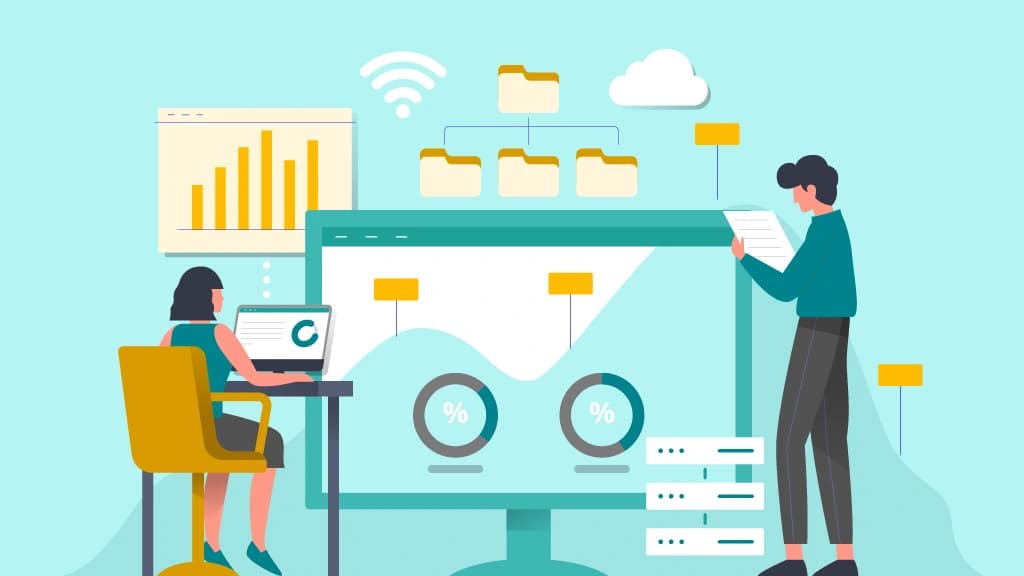How To Measure The Impact of Employee Recognition Programs?

Team AdvantageClub.ai
December 5, 2025

Every business owner wants a happy, engaged team. The easiest way to achieve this? Recognizing and appreciating employees. A well-designed recognition program helps employees feel valued, boosting their morale and productivity.
But a program isn’t enough. You will have to go beyond a program to know where the problem lies. And if you ask us how, our answer is simple. MEASURE YOUR EMPLOYEE RECOGNITION PROGRAMS. You can use traditional methods to gauge the success of your recognition programs but humans have emotions and thus traditional methods might fail to capture them. Businesses need to move beyond these traditional methods and use AI-powered recognition tracking tools and techniques. These tools can help measure the true impact of your recognition programs.
The Hidden Costs of Ineffective Recognition Programs
If recognition programs don’t work well, employees may feel ignored, leading to low participation and high turnover. The right approach can create a culture where employees feel valued, engaged, and eager to contribute. You can ensure this by using tools and techniques to effectively measure the recognition programs and resolve the issues before they become big.
8 Expert Tips for Measuring Employee Recognition Effectively
Platforms like AdvantageClub.ai make it easy to track and improve employee recognition. AI tools provide insights on what works and help align recognition with company goals, creating a more engaged work culture.
1. Move Beyond Vanity Metrics: Focus on Impact, Not Just Participation
Why Counting Shoutouts and Awards Isn’t Enough
Many companies track recognition by counting rewards and shoutouts. But numbers don’t show if employees actually feel appreciated or motivated. The real impact goes beyond simple stats.
Best Practice with AI-Powered Data
With AI-powered data, businesses can clearly see how employees feel and how engaged they are. Instead of counting recognition events, they get a clear and richer picture of recognition’s impact.
| Expert Tip 1 |
|---|
| Use AI-driven analysis by AdvantageClub.ai to go beyond numbers. Analyze employee emotions, their language, and engagement levels to understand how they feel about appreciation. |
2. Link Recognition to Employee Performance & Business Outcomes
Measuring Recognition's Influence on KPIs
Businesses should link recognition programs to business objectives such as productivity, retention, and innovation. Instead of guessing the program’s impact, organizations can directly use AI to measure how recognition affects employee performance. This process helps understand the ROI of recognition programs.
Best Practice with AI-Powered Data
Companies can use AI-powered data to understand recognition’s role in a company’s success. By tracking it with work goals, they can measure its impact. As a result, recognition is no longer just a feel-good program but a strategic move.
| Expert Tip 2 |
|---|
| Use AdvantageClub.ai predictive analytics to measure how frequent, significant recognition improves performance, reduces turnover, and increases revenue. This data-driven strategy ensures recognition initiatives align with the business objectives. |
3. Track Real-Time Engagement, Not Just Annual Surveys
The Problem with Infrequent Surveys
Checking employee recognition once a year isn’t enough. Yearly surveys miss important changes, delaying action. Businesses need real-time tracking to stay ahead.
Best Practice with AI-Powered Data
Live dashboards and ongoing feedback allow businesses to track recognition as it happens. These dashboards help companies make changes whenever needed. As a result, recognition is always relevant and practical.
| Expert Tip 3 |
|---|
| Use AdvantageClub.ai’s AI-driven reminders and participation heatmaps to track real-time trends, identify in engagement, and respond immediately. This tool makes recognition programs cool and interesting. |
4. Measure Recognition Equity Across Teams & Demographics
Spotting Unconscious Bias in Recognition Distribution
Fair recognition keeps employees happy and engaged. But, when some employees receive more appreciation as compared to others, it can lead to frustration. AI and data analytics can locate hidden biases in recognition. It makes sure that appreciation is shared equally in the company.
Best Practice with AI-Powered Data
AI-powered insights help monitor recognition patterns, alert employees to inconsistencies, and give each employee the recognition they deserve. A fair appreciation system helps create a more engaged and diverse workforce.
| Expert Tip 4 |
|---|
| Use AdvantageClub.ai’s diversity and inclusion analytics to identify recognition gaps, balance appreciation across employee segments, and create a culture where everyone feels valued. |
5. Use Social Recognition Data to Gauge Employee Sentiment
Analyzing Peer-to-Peer Recognition Trends
When employees appreciate each other, it shows how they feel about work. Tracking peer recognition helps measure morale and job satisfaction. AI tools can help spot trends and ensure recognition stays meaningful.
Best Practice with AI-Powered Data
Instead of only counting recognitions, companies can also review trends to make sure employees are being appreciated in realtime. Combining recognition trends and sentiment scores provides high employee participation and engagement.
| Expert Tip 5 |
|---|
| Use AdvantageClub.ai’s AI-driven sentiment tracking to check if recognition feels genuine. If engagement drops, adjust strategies to make appreciation more meaningful. |
6. Identify Recognition Fatigue & Optimize Incentive Structures
The Risk of Recognition Overload
Too much recognition can lose its impact. If praise feels automatic, employees may stop valuing it. A balanced approach keeps recognition meaningful and motivating.
Best Practice with AI-Powered Data
Monitor appreciation trends using AI and detect when it begins to slow down. can easily adjust frequency and modify rewards to maintain meaningful recognition with the help of AI.
| Expert Tip 6 |
|---|
| Leverage AdvantageClub.ai’s AI-powered nudges to improve recognition frequency, customize rewards, and keep appreciation fresh and interesting. |
7. Measure the Influence of Recognition on Managerial Effectiveness
Recognition Frequency and Leadership Effectiveness
When managers regularly acknowledge their teams, employees feel valued and motivated. However, if the acknowledgment is not regular, it can affect team performance and morale. Identifying these gaps helps to improve leadership skills.
Best Practice with AI-Powered Data
AI can monitor the frequency at which managers appreciate their teams and identify areas for improvement. This approach allows leaders to contribute actively to an appreciation culture.
| Expert Tip 7 |
|---|
| Use AdvantageClub.ai leadership insights to track appreciation by managers, provide real-time guidance, and establish a more significant appreciation culture across the organization. |
8. Benchmark Your Recognition Program Against Industry Trends
The Power of External Benchmarking
Compare your recognition efforts with top companies to find ways to improve. This helps businesses stay competitive and ensure employees feel valued.
Best Practice with AI-Powered Data
AI-powered benchmarking tools you compare your recognition program with industry trends and offer suggestions to make it better.
| Expert Tip 8 |
|---|
| Use AdvantageClub.ai’s industry benchmarking to measure your recognition program and find ways to improve it. This data-driven approach keeps your strategy competitive and impactful. |
How to Measure Success of Employee Recognition?
Recognizing employees is not only about giving them awards. A data-driven approach guarantees that employees get personalized recognition. Here is how businesses can do it:
Centralize Recognition Data
Use a platform like AdvantageClub.ai to bring all types of recognition together: peer-to-peer, manager-led, and incentives. This helps you see what’s working and what needs improvement.Track Real-Time Recognition Metrics
Use dashboards to see how often employees are recognized and what needs improvement. AI alerts can help spot teams that need more engagement and appreciation.Analyze Sentiment & Engagement Impact
Numbers don’t tell the whole story. AI can analyze employees’ emotions and feedback. This helps understand how recognition programs are affecting employees.Benchmark Against Industry Standards
Use benchmarking software to compare your recognition program with industry best practices. See your weak spots and adjust accordingly.Optimize with Predictive Insights
AI can predict how recognition affects retention, productivity, and employee morale. Use the data to adjust your approach and improve incentives.
With the help of AI-based analytics, organizations can make rewarding more impactful, resulting in better employee performance and satisfaction.
The Future of Recognition Measurement
Machine learning and AI are changing the future of employee appreciation. A smart, data-driven platform makes recognition programs more effective and scalable. So, instead of guessing, companies can use real-time insights with Advantageclub.ai to boost engagement and success.
Make recognition truly impactful—choose AdvantageClub.ai and elevate your workplace experience today!





